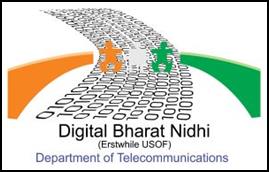BharatNet: Bridging the Digital Divide
BharatNet: Bridging the Digital Divide
Introduction to BharatNet
In a world increasingly driven by digital innovation, internet connectivity has become a cornerstone for economic growth, education, healthcare, and governance. Digital divide was significant challenge, especially in rural India, and to address this, the government of India launched BharatNet in October 2011, an ambitious project aimed at providing affordable high-speed internet access to every Gram Panchayat in the country. This initiative, under the Ministry of Communications, seeks to empower rural India, fostering inclusive growth and bridging the gap between urban and rural communities. BharatNet is not merely an infrastructure project; it is the backbone of India’s journey towards a truly digital nation.

Amended BharatNet 2023
In August 2023, the government approved the Amended BharatNet Program (ABP). The program provides for internet access by Optical Fibre (OF) connectivity to 2.64 lakh GPs in ring topology and also to provide OF connectivity to the remaining non-GP villages (approx. 3.8 lakhs) on demand basis. The design improvement, at a cost of Rs. 1,39,579 crores, in ABP is aiming at:
Digital Bharat Nidhi: Funding BharatNet
Digital Bharat Nidhi (DBN) is a fund that aims to improve the quality and accessibility of telecommunications services in India. It was established by the government of India as a replacement for the Universal Service Obligation Fund (USOF). The DBN’s goals are to:

Working of BharatNet
BharatNet operates as the world’s largest rural broadband connectivity program. The project is being executed by a Special Purpose Vehicle (SPV) namely Bharat Broadband Network Limited (BBNL), which has been incorporated on 25.02.2012. On 30.04.2016, the Telecom Commission approved to implement the project in three phases:

The network’s core relies on optical fiber cables, satellite links for remote regions, and wireless technologies for last-mile connectivity. Implemented under the Universal Service Obligation Fund (USOF), BharatNet adopts a Public-Private Partnership (PPP) model to ensure efficient execution and maintenance.
Impact of BharatNet
BharatNet has had a transformative impact on rural India, contributing to socioeconomic development in multiple ways:
Key Achievements and Milestones

Internet Inclusivity in India
Internet access is available in the country including rural areas through the Telecom Service Providers (TSPs) through wireless mobile and fixed wireline broadband. Government has taken numerous initiatives to enhance internet connectivity in India through mobile connectivity and optical fiber rollout. As a result, as of October, 2024:
Conclusion
BharatNet holds the promise of transforming rural India into a digitally empowered society. By addressing these challenges and maintaining its momentum, the initiative can pave the way for a more inclusive and connected future. BharatNet is more than an infrastructure project; it is a lifeline for millions of rural Indians aspiring to connect with opportunities beyond their immediate surroundings. With robust execution and sustained efforts, BharatNet will continue to bridge the digital divide and empower every corner of India with the transformative power of the internet.
References
https://sansad.in/getFile/loksabhaquestions/annex/183/AS329_R1XIRX.pdf?source=pqals
https://usof.gov.in/en/usof-dashboard
https://pib.gov.in/PressNoteDetails.aspx?NoteId=151993&ModuleId=3®=3&lang=1
https://pib.gov.in/PressReleaseIframePage.aspx?PRID=2077908
https://usof.gov.in/en/bharatnet-project
BharatNet: Bridging the Digital Divide
- Phase I: Focused on laying optical fiber cables to connect 1 lakh Gram Panchayats by utilizing existing infrastructure. Completed in December 2017, this phase established the foundational network.
- Phase II: Expanded the coverage to an additional 1.5 lakh Gram Panchayats using optical fiber, radio, and satellite technologies. This phase incorporated collaborative efforts with state governments and private entities.
- Phase III: Aims at future-proofing the network by integrating 5G technologies, increasing bandwidth capacity, and ensuring robust last-mile connectivity. This phase is ongoing, with a focus on improving accessibility and reliability.